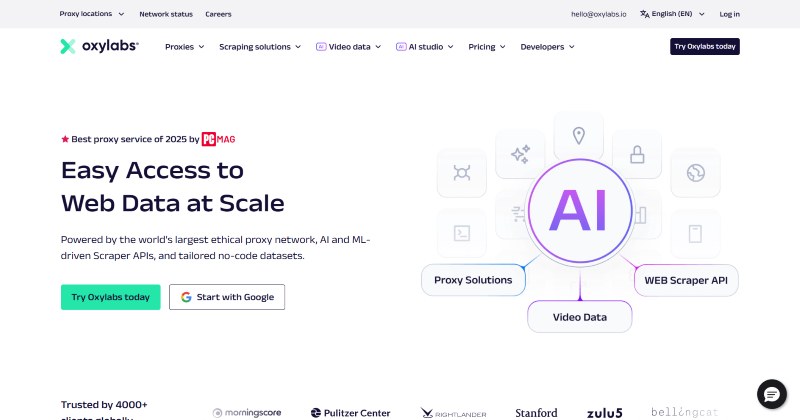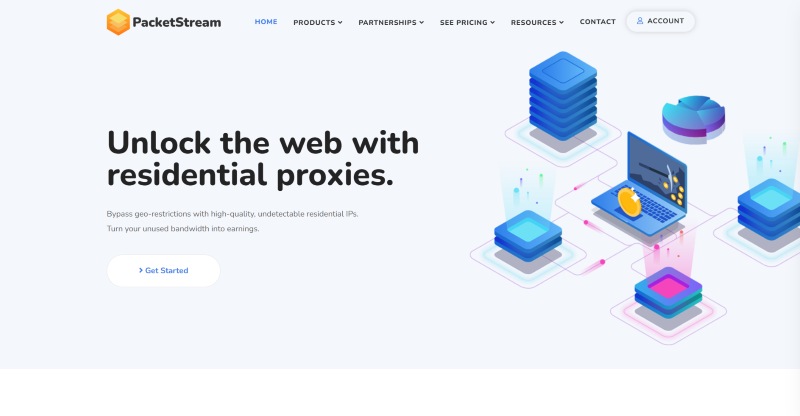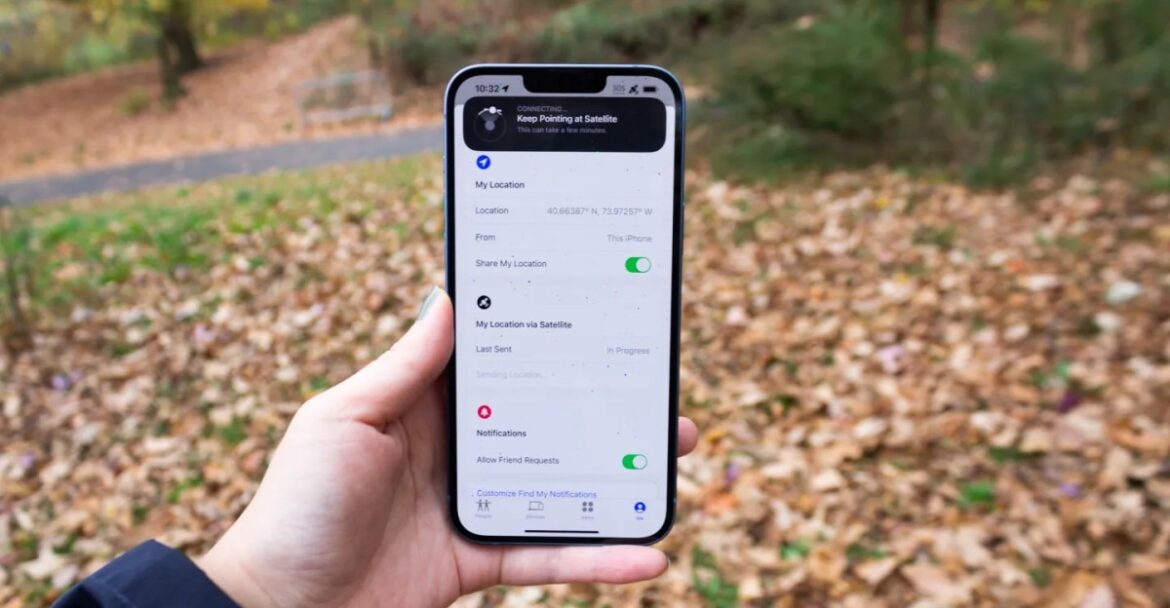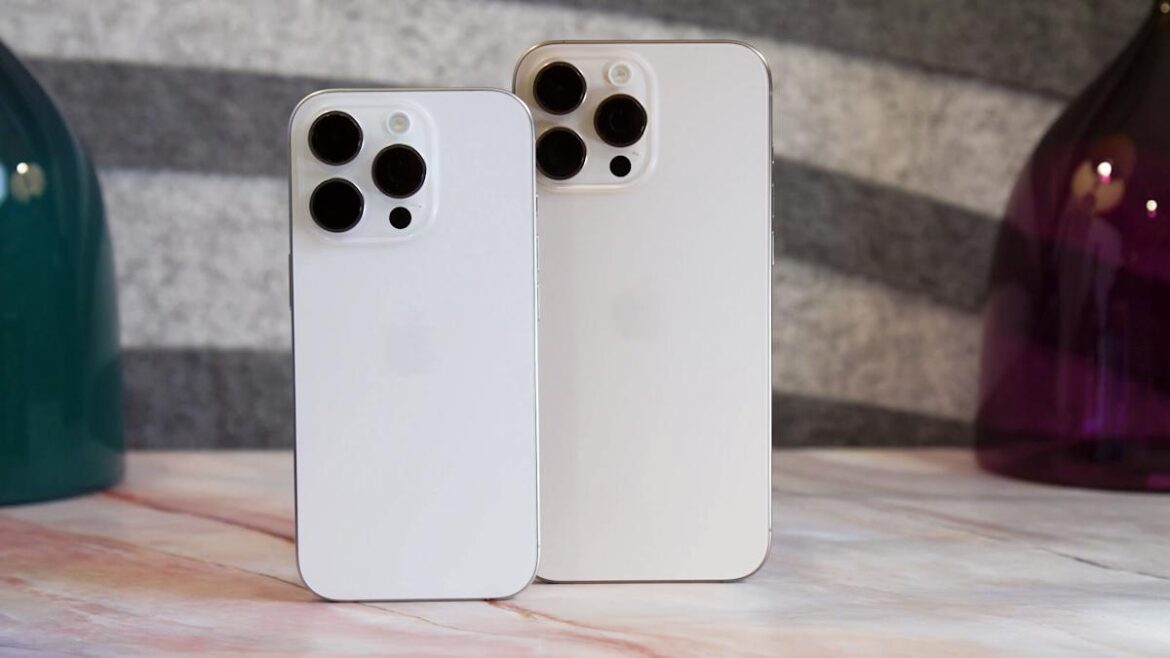Why you can trust TechRadar
We spend hours testing every product or service we review, so you can be sure you’re buying the best. Find out more about how we test.
In 2015, the proxy software market growth was in full swing, so Oxylabs came into being to answer the need for IPs in different locations. It was born in Lithuania and has developed to have more than 175 million IPs in 195 countries (that’s practically the whole world), with the US, the UK, and Germany becoming home to its largest networks.
Through Oxylabs, users can gain access to residential, mobile, datacenter (regular and dedicated), and ISP proxies, as well as a web scraping API and comprehensive datasets (all scraped ethically from publicly available sources) required for various businesses.
On top of that, it supports the SOCKS5 protocol, making its proxies ideal for threat intelligence and cybersecurity, as well as the web unblocker for real-estate scraping and travel fare aggregation.
With this in mind, Oxylabs has a separate tier that targets businesses that need proxy services for their operations. Say you want to scrape data from e-commerce sites – you can do this with the provider’s proxy servers and a price comparison app.
Thanks to its cooperation with renowned data centers and the cyber insurance service, if you suffer damage due to a lapse in the proxy network, clients can feel safe and well taken care of by a capable proxy service platform.
- Oxylabs subscription options:
- 1 month plan – $210 per month ($210 total cost)
Oxylabs: Plans and Pricing
Oxylabs’ pricing structure depends on the type and bandwidth of IPs on offer.
Residential has two plans: Regular and Enterprise.
The Regular option comes in the pay-as-you-go, no-commitment variant that starts at $4/GB and offers up to 50GB of traffic per month, as well as Micro at $3.87/GB for 13GB of traffic, Starter at $3.75/GB for 40GB of traffic, and Advanced at $3.49/GB for 86GB of traffic.
As for the Enterprise option, it includes Premium ($3.01/GB for 133 GB of traffic), Venture ($2.75/GB for 318 GB of traffic, plus a dedicated account manager to boot), Corporate ($2/GB for 1TB of traffic), and Custom + (starting at $2,500/month for over 2 TB of traffic) tiers.
ISP proxies start at $16 monthly for 10 IPs (i.e. $1.60 per IP). The higher the number of chosen IPs, the lower their unit cost. For example, 100 IPs cost $130/month ($1.30 per IP), 1,000 will set you back by $1,150/month (that’s $1.15 per IP), and if you need more than 1,000 IPs, you can contact Oxylabs’ sales team for a tailored quote.
Mobile proxies (4G, 5G, or LTE rotating IPs) have a similar price structure as their residential counterparts.
Hence, there are two tiers – Regular and Enterprise. The former charges $5.4/GB under the pay-as-you-go variant (1GB of traffic and up to 50GB available top-ups), $4.92/GB for the Micro option (12GB + up to 12GB top-ups), $4.74/GB for Starter (38 GB + 38 GB top-ups), and $4.5/GB for Advanced (80GB + up to 80 GB top-ups).
Enterprise pricing for mobile proxies ranges from $3.9/GB under the Premium pack (123GB + up to 123 GB available top-ups) to $3.6/GB under Venture (292 GB + up to 292 GB top-ups) to $3/GB for Corporate (600 GB + up to 600 GB top-ups). Need more? You can get it starting at $3,000/month for over 1TB of traffic, custom top-up options, and a dedicated account manager – an option also available with Venture and Corporate.
For datacenter IPs, you can choose regular or dedicated proxies.
If you want regular datacenter IPs, the choice of payment is yours – pay per IP or GB. The IP-based pricing (with unlimited bandwidth) ranges from the free tier for 5 IPs (no credit card required) through $12 per month for 10 IPs to $750 monthly for 1,000 IPs. On the other hand, bandwidth pricing starts at $50 per month for 77GB and ends at $2,200 for 5TB (no extra IP cost). If your needs surpass these packages, you can arrange for a custom deal.
Should you require IPs from a dedicated proxy server instead of a shared one, Oxylabs offers plans ranging from $6.75 per month for 3 IPs to $3,600 monthly for 3,000 IPs (unlimited bandwidth, with fair usage, which is up to 100 concurrent sessions and a a monthly data threshold of 100 GB per IP), with custom options available if your needs exceed 3,000 IPs.
The platform also has web scraping APIs on offer – regular and enterprise options – the former offering a non-committal free trial for up to 2,000 results, and paid options ranging from $49/month for up to 98,000 results to $249/month for up to 622,500 results. The latter starts at $499/month for up to 1.35 million results and ends at $2,000/month for up to 8 million results, with custom options starting at $10,000/month.
Finally, the web unblocker feature, an AI-powered proxy solution for block-free web scraping at scale, also offers regular and enterprise pricing alongside a 7-day trial. The regular pricing starts at $75/month for 8 GB of traffic and ends at $660/month for 88 GB of traffic. Enterprise options start at $900/month for 128 GB of traffic and a dedicated account manager, ending at $3,500 for 700 GB of traffic and a higher rate limit, with custom options available starting at $5,000/month.
All the packages (Regular and Enterprise) have a 10% discount if you sign up for the yearly subscription. Oxylabs accepts payment cards, wire transfers (both in US dollars and euros), AliPay, and PayPal.
Oxylabs: Features
A user’s journey with Oxylabs begins with registration. You can sign up with your email address or an existing Google account. After signing up, you’ll be redirected to a dashboard where you can access all features. Whether residential proxies, mobile proxies, a web unblocker, or a scraping API, this intuitive dashboard makes it easy to find what you want.
(Image credit: Oxylabs)
Let’s dive deeper into the features Oxylabs offers:
Residential proxies
Residential proxies are real IP addresses offered by Internet Service Providers (ISPs). They’re tied to real devices in physical locations, allowing you to bypass geo-restrictions for different purposes.
For example, price comparison sites need to scrape localized data from different websites to offer good deals to users. However, retailers are often against price scraping and use geo-restrictions to prevent their sites from being scraped.
A residential proxy lets price comparison sites bypass these geo-restrictions and harvest the required data. Because the residential proxy is tied to a legitimate device, the price comparison site operator can visit a website like any normal user.
Retailers also often have different prices for different locations. Residential proxies let price comparison providers visit localized versions of a retail website. Oxylabs provides access to over 175 million residential IPs across 195 countries, including over 10 million in the US, more than 5 million in China, 3.5 million+ in Germany, and roughly the same amount in the UK.
You can precisely target IPs by country, city, state, ZIP code, and even geographical coordinates, making it easy to get localized data. Oxylabs’ developer-friendly documentation and integrations make integrating these IPs into your app as smooth as possible.
Oxylabs’ IPs are legitimately sourced, which is important in a proxy sector that constantly grapples with illegitimately acquired IP addresses that expose customers to risks. It gets its residential IPs from consenting device owners who agree to join the network in exchange for a benefit, e.g., a VPN service.
ISP Proxies
Residential proxies are reliable for many use cases, but they have limitations regarding large-scale data scraping. Usage restrictions, such as bandwidth limits and available time per day, make them unsuitable for scraping massive amounts of data.
Oxylabs mitigates this situation by providing proxies leased directly from ISPs like British Telecom, Comcast, Lumen, Orange, and Frontier. You can request a shared ISP proxy (shared by up to 3 users) or a dedicated proxy, which is more expensive.
Oxylabs provides ISP proxies for enterprises with unlimited duration sessions or dynamic IP rotation. These ISP proxies are well-suited for heavy traffic loads, such as mass data scraping, app testing, and ad verification. The tradeoff is their high cost, starting at $1.60 monthly per shared IP.
Mobile proxies
Oxylabs provides access to a massive mobile proxy pool with 20 million+ addresses in 140 or so countries. You can filter these IPs by country, state, city, and coordinates to find precisely what you want. Its largest proxy pools are available in the US, Germany, France, Canada, the UK, and Mexico.
Mobile proxy servers act like mobile devices, enabling users to bypass geo-restrictions and general website blocks. For example, many websites use CAPTCHA to prevent web scraping bots from accessing their data. But with Oxylabs, you can use real mobile IP addresses to bypass CAPTCHA and scrape the needed data.
A mobile proxy is also an excellent tool for ad verification. Companies use them to monitor whether their ads are displayed to real traffic rather than bots. Likewise, businesses can combine Oxylabs’ mobile proxy service and scraping API to gather and respond to real-time reviews.
Data center proxies
Oxylabs offers datacenter proxies that aren’t sourced from ISPs. Instead, they come from secondary cloud service providers, offering anonymity and private IP authentication.
(Image credit: Oxylabs)
Datacenter proxies are high-speed and perform well, making them a great option for massive data scraping. You can buy them in bulk for a cost-effective sum, starting at $1.20 monthly per IP (a pack of 10 IPs), compared to $4/GB for Oxylabs’ residential proxies and $5.4/GB for mobile proxies.
Oxylabs provides shared and dedicated datacenter IPs, the latter of which is more expensive. Shared IPs have unlimited bandwidth, while the bandwidth for dedicated IPs varies by your chosen plan. For both types, you can connect to your proxy servers via the HTTP, HTTPS, and SOCKS5 protocols.
Web Unblocker
Oxylabs offers a Web Unblocker that specializes in bypassing anti-bot systems. Many websites use sophisticated systems to prevent scraper bots, but Oxylabs enables you to bypass these systems and scrape the data you require.
It uses dynamic fingerprinting to simulate human-like browsing, with the same headers, cookies, and JavaScript rendering of a web browser. You’ll use a proxy, but the websites think it’s a legitimate user, and it serves the required content without hassles.
The Web Unblocker also uses machine learning techniques to select and rotate proxies, deciding what works best on a specific site. If your scraping request fails, the Web Unblocker automatically rotates proxies to send another request. This process occurs until the request is finally fulfilled.
Scraping APIs
Data scraping is a common use case of residential, ISP, mobile, and datacenter proxies. Companies use them to scrape data manually, a process that gets cumbersome when dealing with massive amounts of data. But Oxylabs solves this problem by offering APIs to automate data scraping.
You’ll select the type of data you want to scrape (text, images, prices, ads, social media likes, etc.) and choose your target website. Then, the API goes to work, scraping the data while you focus on other tasks. You’ll be alerted once your data scraping task is complete. Oxylabs offers distinct APIs for scraping search engines, e-commerce, or other public websites.
(Image credit: Oxylabs)
Other scraping solutions currently offered by Oxylabs include its unblocking browser, which is a ‘maintenance-free and anti-bot-ready headless browser,’ OxyCopilot, an AI-powered assistant for generating web scraping and parsing requests, video data API, and an AI studio with a smart crawler, scraper, browser agent mimicking human behavior when navigating, web search interpreter, and a website mapping tool.
Oxylabs: Ease of Use
Oxylabs offers an intuitive interface that’s easy to navigate. All features are neatly arranged on the dashboard, with the menu on the left and the viewing pane beside it. The interface sports a white background, purple and black text, and contrasting colours that look visually appealing.
This platform put considerable effort into its proxy integrations, making them easy to understand and deploy. If user friendliness were the only criterion for this review, Oxylabs would get a perfect score.
Oxylabs: Customer Support
Oxylabs provides 24/7 support for customers. You can start a live chat with a support agent or send an email and expect a response within 24 hours. Oxylabs’ support team was active and highly willing to solve inquiries during our test.
Customers can also access complementary support resources, primarily extensive documentation for its features. On Oxylabs’ website, you can find detailed guides and user manuals for all types of proxies, making them easier to configure.
There’s a ‘Scraping Experts’ section on Oxylabs featuring web scraping video tutorials. This section provides valuable knowledge from the Beginner to Advanced levels, teaching the ins and outs of website scraping with Oxylabs’ proxies. It is continuously updated with new videos and includes on-demand Q&A sessions to learn directly from scraping experts.
However, we noticed a drawback. There is no telephone support for customers, which is an inconvenience when paying for an expensive tool.
Oxylabs: The Competition
The proxy software industry is very competitive, with no shortage of rivals to Oxylabs. The main competitors we’d like to highlight are Bright Data, Decodo (formerly Smartproxy), and SOAX.
Bright Data is excellent for residential, mobile, and datacenter proxies. It also offers web scraping APIs like Oxylabs. The difference is that Bright Data offers more customizability and is a costlier solution.
Decodo is another reliable proxy server provider, with its datacenter proxies supporting the SOCKS5 protocol just like Oxylabs. However, Oxylabs has a larger IP pool of 175 million+ proxy addresses.
SOAX provides a massive proxy IP pool as well, and it has web scraping APIs and a Web Unblocker like Oxylabs. However, it outshines Oxylabs in terms of user-friendliness and customizability.
Oxylabs: Final verdict
All things considered, Oxylabs’ reputation as one of the best proxy providers in the industry is well deserved. Not only does it offer a 175 million-strong pool of proxy IP addresses for data scraping and other business tasks, but it also throws in a bunch of useful tools for good measure. This includes a sophisticated web scraping API, unblocking capabilities, an AI assistant, a video data API, and an AI studio.
As such, it’s not just great for individual users with demanding proxy requirements, but also for any business looking for a proxy provider that can serve its needs at scale. That said, it might be a bit expensive, especially if you’re a high-level user. Still, all the advanced features listed above certainly justify the price mark.
We’ve also highlighted the best proxy and best VPN










